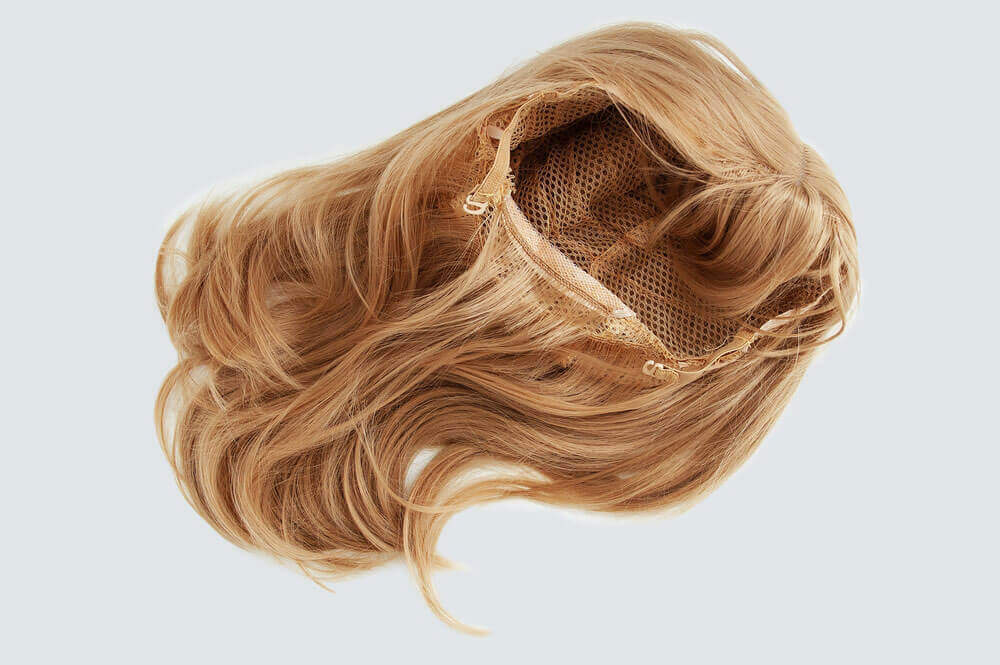Closure Wig Vs. Frontal Wig Which Is Better
Figuring out a perfect hair look might take some time. We don’t have to mention how many choices and styles are available nowadays. While it’s great to have your options laid down, it can be challenging to narrow them.
For instance, you know you want a wig with a natural-looking hairline, so you’ve heard about lace closures, but what about lace frontals?
Before you get overwhelmed with multiple options, we will explain everything related to closure and frontal wigs, so you can find an appropriate hairpiece that complements your look.
What is frontal sew in?
This refers to a piece of hair that features a strip of material that runs from one ear to another. It’s usually 13 inches long and stretches 5 inches back, creating a half-wig shape. In most cases, it’s sewn onto bundles; however, you can use these pieces to create a full wig.
Now, when it comes to lace frontal, this is a lace material that blends into your hairline and natural skin. Generally, silk and lace are the most common materials used to make frontals.
Considering both have a different appearance on your scalp, deciding which material to use will depend on the type of look you are trying to accomplish.
One of the benefits lace frontals provide you with is the opportunity to part your hair in any way you want. Since material offers an illusion of scalp, your part will look natural, regardless of how you style it.
Advantages of frontals
They are more comfortable to wear because the frontals cover most of your head.
Due to its high coverage, you can style it in any way you like. This material is also great because it mimics the natural scalp. You get to pull back your hair into a ponytail, which isn’t the case with closures.
If you have a receding hairline, frontals will cover it while adding volume.
You don’t need a lot of bundles to cover your entire hair.

What is a closure wig?
The closure wig is nearly the same as the frontal; however, it has limited styling options. Instead of running from one ear to another, a closure wig is usually a 4×4” patch that makes the front portion of your hairpiece.
Lace closure will also imitate the scalp to create an illusion of a natural hair line. Considering closures contain less material, you don’t have a lot of options when it comes to styling. Basically, you are limited to maybe three parting options, on either side of your head and in the middle.
On the other hand, closures allow you to wear bangs, but it’s impossible to create half ponytails or up-dos because you won’t see your scalp like you would with your natural hair.
Even though they don’t offer plenty of styling options, closures are ideal for people who don’t like change and stick to the same style. Keep in mind that closures are more affordable than frontals.
Advantages of closure wigs
Don’t require a lot of maintenance, and will work great for any hair type, body wave, curly, or straight.
You can choose to place closures on any part of your head, be it on the side or in the middle. This feature makes them extremely popular.
Closures are great because you can dye them any color and create different hair looks.
They seamlessly blend with your natural hair.
Your hair will be protected from damage.
Closures and frontals – similarities
First, let’s dive into both hairpieces and discuss similarities to help you get the hair look you always wanted. Closures and frontals are made of lace and hair extensions, which are sewn into the base of the wig.
The lace is an important part of these wigs because it gives an illusion of a natural scalp. These two are also a great option because they allow you to style your hair differently while keeping a natural hairline.
Consider adding baby hair around the edges to make it more realistic. Both of these wigs are quite easy to install and don’t demand blending. You can also braid and protect your hair without leaving any locks out.
If you want to accomplish the most natural-looking scalp, we suggest bleaching the knots to minimize the appearance of lace. Now that you understand some similarities let’s focus on the differences.

What are the differences between closures and frontals?
Let’s start with the most obvious one, which is the size. Closures are 4×4 inches and tend to sit in the middle of the head. They are also smaller because their main role is to close off the small area on the head. In fact, closures only cover the horseshoe size portion at the top.
On the other hand, frontals are longer and typically run 13×4 inches from one ear to another, which provides excellent coverage. In this case, you can part your hair anywhere you want, which gives you more flexibility in styling.
Suppose you want to experiment with colors and textures. In that case, you will most certainly benefit from frontals because they will eliminate the need to heat-style and dye your natural hair in order to blend it with extensions.
Next, we have versatility. For example, frontals recreate hairline from ear to ear, ensuring greater coverage. You can part your hair anywhere and style it in different ways. However, closures measure 4×4 inches and are normally sewn into place.
When it comes to cost, frontals are more expensive than closures. Both can be used to make a wig, but the frontal will offer more versatility due to the bigger lace surface. That’s why people who prefer simple, everyday looks will choose closures.
How to take care of your frontals and closures
People usually make a mistake when treating these two like a real scalp. But let this be a number one tip. Frontals and closures are extremely delicate, and they need special care from time to time.
Therefore, you can’t treat them like your real scalp. Keep in mind that there is no combing, intense scrubbing, scorching, or low-quality hair products.
At this point, it’s necessary to focus on proper hair care products, and we can’t stress this enough. Forget junk drugstore products. Usually, they contain chemicals and toxins that could ruin your frontals and closures before you even get used to them.
Always apply sulfate-free hair care infused with an active component that will ensure your hair looks flawless.
Ladies tend to exaggerate a bit when it comes to heat. But, when it comes to temperature, you need to be very careful because extreme heat will damage your hair and turn it into a mess, and that’s never good. So, be wise and avoid iron.
It can be really disappointing investing money in closures and frontal and then destroying them by not taking the proper care of them.
When brushing your hair, use a wide-tooth comb or a paddle brush. Brush your hair from the ends and work your way to the root. Always hold the hair to avoid tension.
One of the main reasons your closures and frontals get damaged is because they are exposed to elements or get in touch with other objects. Therefore, it’s crucial to store them in a dust-free box, without any other stuff, or hang them inside a cabinet.
You should wash your frontals and closures very gently every 10 to 14 days. Make sure to remove the frontal and closure when washing them. As we mentioned, apply sulfate-free shampoo and rinse them thoroughly with water and condition them the same way.
Which one should you get?
If you are new to this world of weaves and wigs, we suggest you start with closures since frontals are a bit complicated to work with. When installing frontals for the first time, you either have to google “wig install near me” and look for a hair professional or do some tweaking to accomplish a natural look. You have to bleach the knots, tint the lace, and trim the hairline until it blends seamlessly.
Also, frontals need to be applied with the help of glue and reapplied once a week. On the other hand, closures can be applied effortlessly without any glue. Therefore, if you are a beginner, closures are easier to install and maintain.
Can these hairpieces damage your hair?
Yes, but only in cases when you don’t apply them correctly. The proper placement is crucial. For example, if you place a hairpiece too far behind your hairline, you might end up sticking glue to your natural hair, which can cause damage when you remove the frontal or closure.
Conclusion
Now that you know the key differences between these two, you can easily determine which one to install. Keep in mind that both closures and frontals have their pros and cons. Therefore, choose the hair pieces that match your lifestyle and preferences. Also, don’t forget to take care of your wigs properly to avoid damage.
